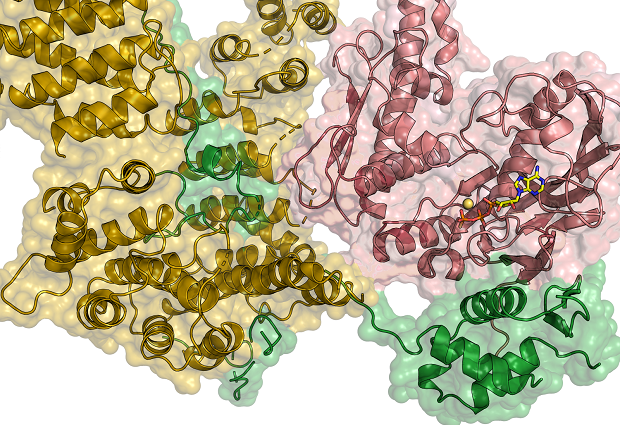
Intact chromosomes during cell division
Solving the mystery of how condensin maintains the integrity of the genome during cell division

Every time a cell divides, its DNA – which is organised into chromosomes – is duplicated and distributed into the two daughter cells. This process ensures the reliable transmission of genetic information to offspring. Responsible for compacting DNA into chromosomes are so-called molecular machines such as condensin complexes. Condensin creates large loops in strands of DNA and thereby structures chromosomes in such a way that they don’t break or get tangled up during cell division. This process is essential to life, yet how the condensin machinery generates these DNA loops has been a mystery until now.
The Haering group, in collaboration with the Hennig group, has now reconstructed the events that take place at the condensin core during DNA compaction at near-atomic resolution. The binding of ATP – the molecule that provides energy to cells – results in a stepwise engagement and disengagement cycle of different proteins of the condensin complex, consequently leading to the opening of its ring structure. These large-scale transitions show the mechanistic path for extruding DNA helices into large loop structures.

Errors in this process result in the accumulation of cells with the wrong number of chromosomes or broken chromosomes. Both are hallmarks of most cancer cells and are also the leading cause of clinically recognised miscarriages in humans. Understanding the functions of the molecular machines that fold chromosomes may be the first step towards controlling their activities and preventing the onset of these conditions.


